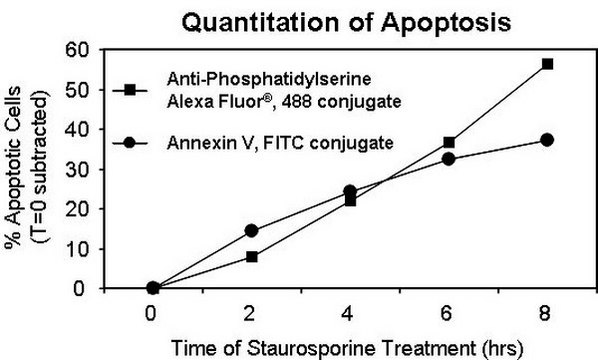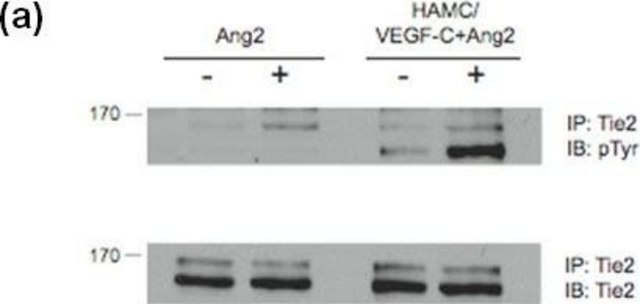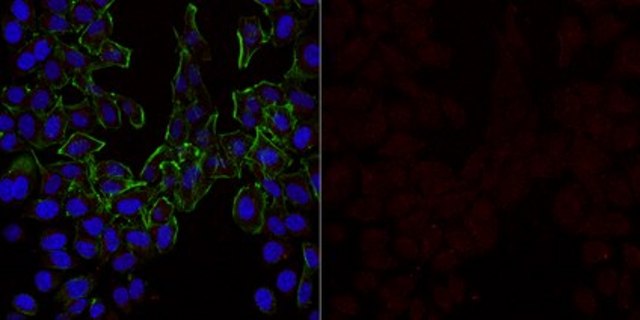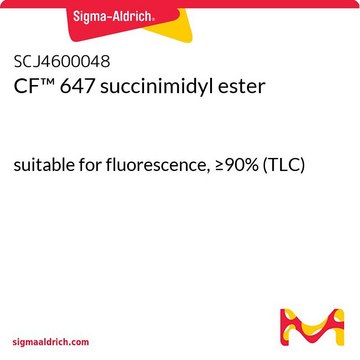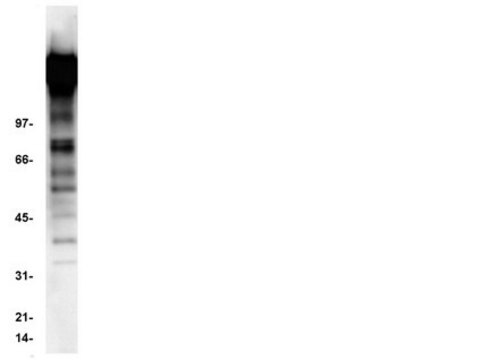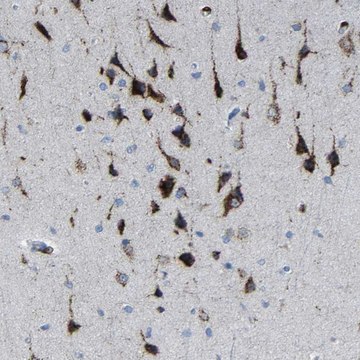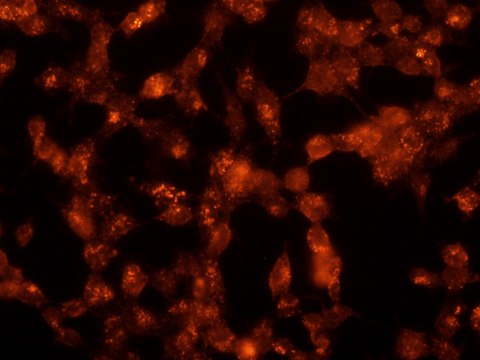05-777-AF647
Anti-Phosphotyrosine Antibody, recombinant clone 4G10® Antibody, Alexa Fluor™ 647
clone 4G10, from mouse, ALEXA FLUOR™ 647
Sign Into View Organizational & Contract Pricing
All Photos(1)
About This Item
UNSPSC Code:
12352203
eCl@ss:
32160702
NACRES:
NA.41
Recommended Products
biological source
mouse
Quality Level
conjugate
ALEXA FLUOR™ 647
antibody form
purified immunoglobulin
antibody product type
primary antibodies
clone
4G10, monoclonal
species reactivity (predicted by homology)
all
technique(s)
immunocytochemistry: suitable
shipped in
wet ice
target post-translational modification
phosphorylation (pTyr)
General description
Phosphorylation plays an important role in regulating protein activities and various cellular signaling events. Posttranslational phosphorylation can occur on histidine (pHis), serine (pSer), threonine (pThr), and tyrosine (pTyr) residues. Due to the early advent of anti-pTyr antibodies, tyrosine phosphorylation remains the mostly studied signaling events in all biological research fields. Tyrosine phosphorylation is considered to be one of the key steps in signal transduction and regulation of enzymatic activity. Before the availability of anti-pTyr antibodies, protein tyrosine phosphorylation was routiniely detected by time-consuming radioactive labeling. Although radioactive labeling is still considered as more sensitive, advancement in detection technology has greatly improved the detection limits of antibody-based methods. Anti-pTyr antibodies are commonly used in ELISA, immunoprecipitation, immunoblotting (including dot blot and Western blot), as well as indirect immunofluourescent detection of tyrosine phosphorylation in tissue and cell samples.
Specificity
Recognizes tyrosine-phosphorylated proteins from all species.
Target modification is not species-specific
Immunogen
Produced from CHO cells expressing the 4G10 antibody heavy and light chain cDNAs. Purified via heavy chain C-terminus hexa-histidine tag by Nickel affinity matrices prior to conjugation with Alexa Fluor™ 647.
Application
Anti-Phosphotyrosine Antibody, clone 4G10, Alexa Fluor™ 647 is a highly validated recombinant mouse monoclonal antibody that targets protein tyrosine phosphorylation and has been tested in Immunocytochemistry.
Research Category
Signaling
Signaling
This recombinant monoclonal antibody is also available as HRP conjugate (Cat. No. 16-184), agarose conjugate (Cat. No. 16-199), biotin conjugate (Cat. No. 16-204), FITC conjugate (Cat. No. 16-205), PE conjugate (Cat. No. FCMAB323PE), as well as as unconjugated antibody (Cat. No. 05-777) for immunoaffinity purification, flow cytometry, immunocytochemistry, immunoprecipitation, and Western blotting applications.
Quality
Evaluated by Immunocytochemistry in A431 cells.
Immunocytochemistry Analysis: A 1:100 dilution of this antibody detected EGF-induced tyrosine phosphorylation of cellular proteins in A431 cells.
Immunocytochemistry Analysis: A 1:100 dilution of this antibody detected EGF-induced tyrosine phosphorylation of cellular proteins in A431 cells.
Target description
Variable depending on the size(s) of the tyrosine-phosphorylated protein(s).
Physical form
Protein G purified.
Purified mouse monoclonal IgG2a antibody conjugate in PBS with 15 mg/mL BSA and 0.1 % sodium azide.
Storage and Stability
Stable for 1 year at 2-8°C from date of receipt.
Other Notes
Concentration: Please refer to lot specific datasheet.
Legal Information
4G10 is a registered trademark of Upstate Group, Inc.
ALEXA FLUOR is a trademark of Life Technologies
Disclaimer
Unless otherwise stated in our catalog or other company documentation accompanying the product(s), our products are intended for research use only and are not to be used for any other purpose, which includes but is not limited to, unauthorized commercial uses, in vitro diagnostic uses, ex vivo or in vivo therapeutic uses or any type of consumption or application to humans or animals.
Not finding the right product?
Try our Product Selector Tool.
Storage Class Code
12 - Non Combustible Liquids
WGK
WGK 2
Flash Point(F)
Not applicable
Flash Point(C)
Not applicable
Certificates of Analysis (COA)
Search for Certificates of Analysis (COA) by entering the products Lot/Batch Number. Lot and Batch Numbers can be found on a product’s label following the words ‘Lot’ or ‘Batch’.
Already Own This Product?
Find documentation for the products that you have recently purchased in the Document Library.
Anees Ahmad Banday
American journal of physiology. Renal physiology, 311(5), F958-F966 (2016-11-03)
The regulation of Na-K-ATPase in various tissues is under the control of a number of hormones and peptides that exert both short- and long-term control over its activity. The present study was performed to investigate the effect of chronic insulin
Our team of scientists has experience in all areas of research including Life Science, Material Science, Chemical Synthesis, Chromatography, Analytical and many others.
Contact Technical Service